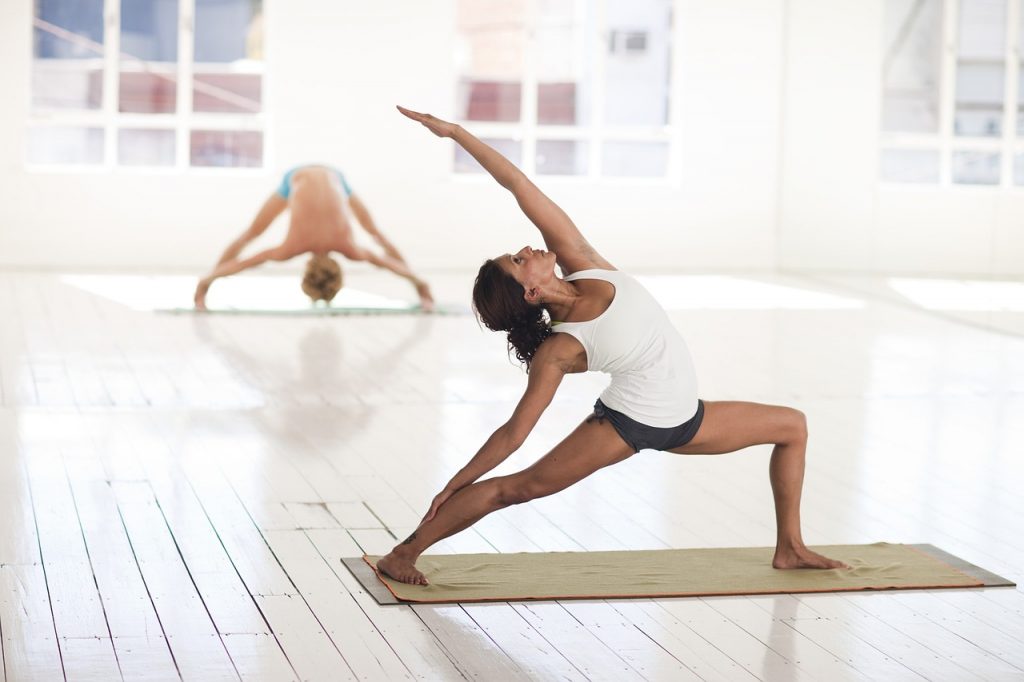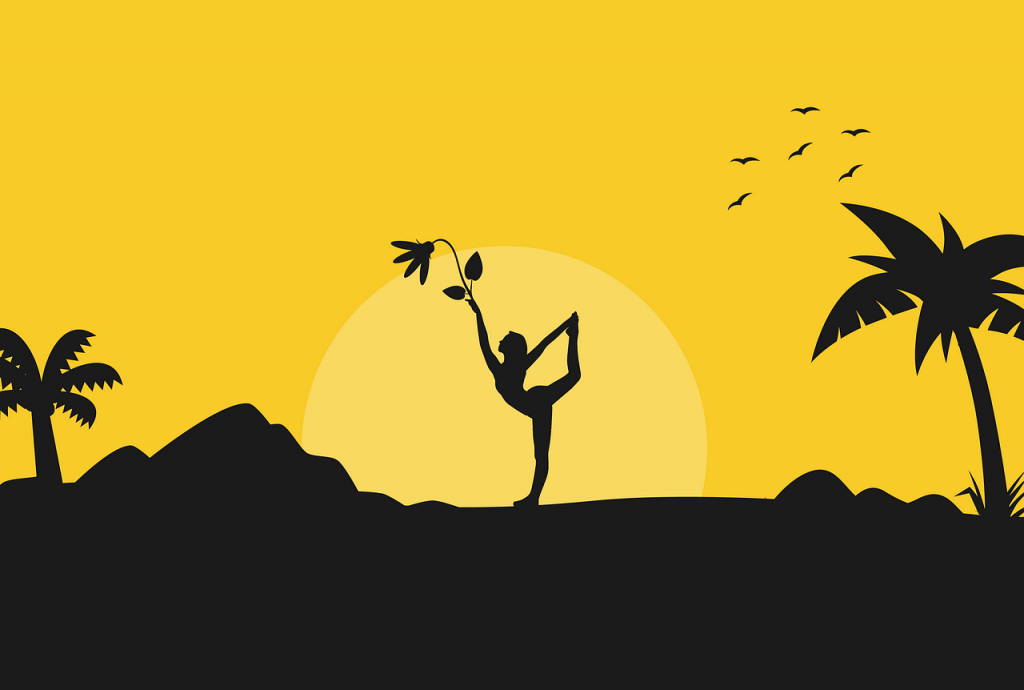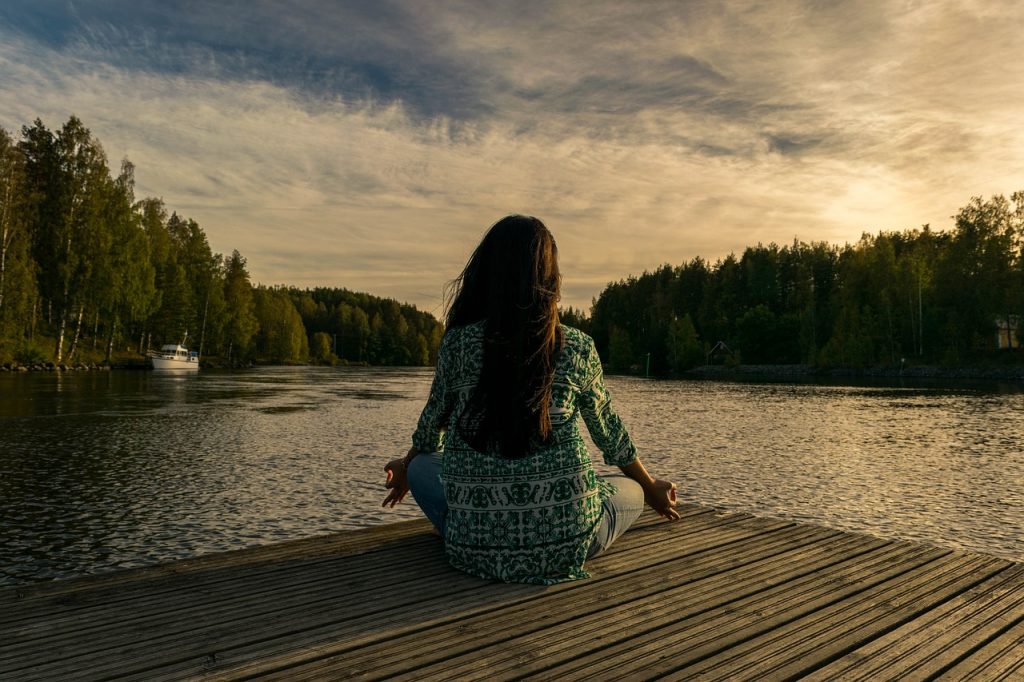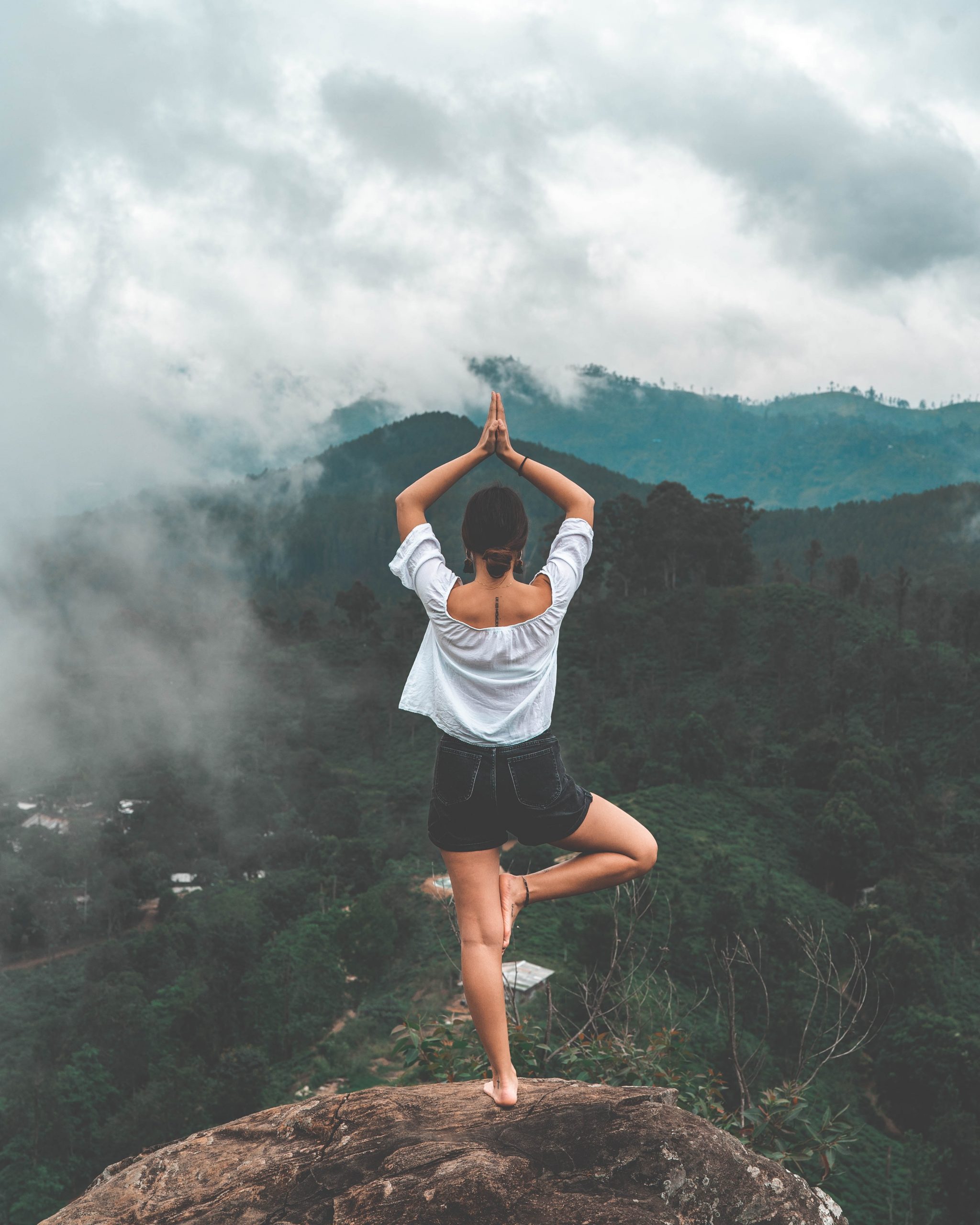Feeling overwhelmed by the stresses of daily life? In this blog, we’ll explore the transformative power of yoga and how it can help you find inner calm and relief from anxiety. Whether you’re a beginner or an experienced yogi, we’ll guide you through a variety of techniques that can be easily incorporated into your daily routine. From deep breathing exercises to gentle stretches and mindful meditation, these practices will empower you to cultivate a sense of peace and harmony within yourself. Say goodbye to stress and anxiety, and say hello to a happier, more balanced you. Let’s dive in and discover the power of yoga for stress and anxiety relief.

This image is property of pixabay.com.
Understanding Stress and Anxiety
Stress and anxiety are two common mental health issues that can greatly impact your well-being. While they are often used interchangeably, stress and anxiety are actually two distinct experiences that can have different effects on your mind and body.
What is Stress?
Stress is a natural response to challenging situations or demands, known as stressors. Whether it’s a looming deadline, a conflict with a loved one, or a major life change, stress is your body’s way of preparing you to cope with these challenges. When faced with a stressor, your body releases stress hormones such as cortisol and adrenaline, causing physical and emotional changes.
Some common signs of stress include increased heart rate, rapid breathing, muscle tension, irritability, and difficulty concentrating. While stress can be beneficial in small doses, chronic or excessive stress can have negative effects on your physical and mental health.
What is Anxiety?
Unlike stress, anxiety is characterized by persistent and excessive worry and fear, even in the absence of an immediate threat. It is often accompanied by physical symptoms such as restlessness, fatigue, difficulty sleeping, and digestive issues. Anxiety disorders are among the most common mental health disorders, affecting millions of people worldwide.
While stress is usually tied to specific stressors, anxiety is often more generalized and can arise without any apparent cause. Experiencing anxiety on a regular basis can interfere with your daily life, making it difficult to function and enjoy activities that you used to find pleasurable.
The Impact of Stress and Anxiety on Well-being
Both stress and anxiety can take a toll on your overall well-being. When left unmanaged, these conditions can lead to a range of physical and mental health problems, including high blood pressure, heart disease, depression, and substance abuse. They can also negatively affect your relationships, work performance, and overall quality of life.
It’s important to recognize the signs and symptoms of stress and anxiety so that you can take appropriate steps to manage and alleviate them. One effective method for finding relief from stress and anxiety is through the practice of yoga.
Benefits of Yoga for Stress and Anxiety Relief
Yoga, an ancient practice that combines physical postures, breathing techniques, and meditation, has been proven to be a powerful tool in managing stress and anxiety. The following are some of the benefits of practicing yoga for stress and anxiety relief.
Physical Benefits
Engaging in regular yoga practice can have numerous physical benefits that contribute to stress and anxiety reduction. Yoga helps to release physical tension in the body by stretching and strengthening muscles, improving flexibility, and increasing blood flow. It can also help alleviate common physical symptoms associated with stress, such as headaches, back pain, and muscle soreness.
Regular yoga practice has been linked to a decrease in the production of stress hormones, leading to a reduction in blood pressure, heart rate, and cortisol levels. Additionally, yoga can improve sleep quality, boost immune function, and enhance overall physical well-being.
Mental and Emotional Benefits
In addition to the physical benefits, yoga also provides significant mental and emotional relief from stress and anxiety. The practice of yoga promotes mindfulness and present-moment awareness, allowing you to cultivate a sense of calm and relaxation. By focusing on your breath and body movements, you can bring your attention away from stressors and into the present moment.
Yoga also helps to regulate the nervous system, shifting the body from the fight-or-flight response associated with stress to the rest-and-digest response of relaxation. This can lead to a decrease in anxiety symptoms, such as racing thoughts, worry, and restlessness.
Spiritual Benefits
Yoga is not just a physical exercise, but also a spiritual practice that can provide a deeper sense of connection and purpose. Through the practice of yoga, you can cultivate qualities such as gratitude, compassion, and self-acceptance, which can contribute to overall well-being and stress reduction. Yoga can also help you develop a greater sense of spirituality and connection with something larger than yourself, whether it be a higher power, nature, or the universe.
By incorporating yoga into your daily routine, you can experience these physical, mental, and spiritual benefits, leading to a greater sense of peace, joy, and balance in your life.

This image is property of pixabay.com.
Getting Started with Yoga for Stress and Anxiety Relief
If you’re interested in harnessing the benefits of yoga for stress and anxiety relief, here are some steps to help you get started.
Choosing the Right Yoga Style
There are many different styles of yoga, each with its own focus and intensity level. It’s important to choose a yoga style that suits your individual needs and preferences. If you’re looking for a gentle and relaxing practice, you may want to try Hatha or Restorative yoga. If you prefer a more dynamic and challenging practice, you might enjoy Vinyasa or Ashtanga yoga. Experiment with different styles to find what works best for you.
Creating a Safe and Comfortable Practice Space
Before starting your yoga practice, it’s important to create a safe and comfortable space where you can practice without distractions. Find a quiet and clutter-free area in your home where you can lay out your yoga mat. Consider dimming the lights, playing soft music, or using essential oils to enhance the ambiance. Make sure you have any necessary props, such as blocks or straps, nearby for support.
Finding a Qualified Instructor or Online Class
If you’re new to yoga, it can be helpful to learn from a qualified instructor who can guide you through the poses and provide feedback on your alignment. Look for local yoga studios or community centers that offer beginner-friendly classes. Alternatively, there are plenty of online platforms that offer virtual yoga classes taught by experienced instructors. Choose a class that caters to your skill level and interests.
Breathing Techniques to Calm the Mind and Body
One of the key elements of yoga is the focus on breath control, also known as pranayama. Conscious breathing techniques can be powerful tools for calming the mind and bringing your body into a state of relaxation. Here are three simple breathing techniques that you can practice to find relief from stress and anxiety.
Deep Abdominal Breathing
Deep abdominal breathing, also known as diaphragmatic breathing, involves taking slow, deep breaths that expand your diaphragm and fill your abdomen with air. To practice deep abdominal breathing, find a comfortable seated position and place one hand on your chest and the other on your belly. Take a slow inhale through your nose, allowing your abdomen to rise, and then exhale through your nose, allowing your abdomen to fall. Focus on making your exhalations longer than your inhalations to activate the body’s relaxation response.
Alternate Nostril Breathing
Alternate nostril breathing, also known as Nadi Shodhana, is a breathing technique that helps balance the left and right sides of the brain, promoting a sense of calm and balance. Sit in a comfortable position and use your right hand to control your breath. Close your right nostril with your right thumb and inhale deeply through your left nostril. Then, close your left nostril with your right ring finger and exhale through your right nostril. Continue this pattern, inhaling through your left nostril and exhaling through your right nostril, for several rounds.
Extended Exhalation Breath
The extended exhalation breath is a simple but effective technique for calming the nervous system and reducing anxiety. Sit comfortably and take a deep inhale. As you exhale, make a soft “ha” sound, allowing your breath to be longer on the exhale than on the inhale. This extended exhalation helps activate the body’s relaxation response and can help quiet racing thoughts and anxious feelings.

This image is property of pixabay.com.
Yoga Poses for Stress and Anxiety Relief
In addition to breathwork, practicing specific yoga poses can further enhance your ability to manage stress and anxiety. Here are three gentle poses that can help calm the mind and body.
Child’s Pose (Balasana)
Child’s pose is a restorative pose that promotes relaxation and helps release tension in the back and shoulders. Begin by kneeling on your mat with your knees hip-width apart. Sit your hips back onto your heels and then fold forward, lowering your chest towards the ground. Extend your arms in front of you or rest them alongside your body. Allow your forehead to rest on the floor or a block if it’s more comfortable. Breathe deeply and hold this pose for several breaths, allowing yourself to surrender and let go of any stress or tension.
Forward Fold (Uttanasana)
Forward fold is a calming pose that stretches the entire back of the body, releasing tension and promoting a sense of relaxation. Start in a standing position with your feet hip-width apart. Slowly bend forward from the hips, allowing your upper body to hang over your legs. Depending on your flexibility, you can rest your hands on the backs of your legs, the ground, or grab onto opposite elbows. Let your head hang heavy and relax your neck. Take deep breaths and hold this pose for several breaths, allowing your body to release and your mind to quiet.
Legs-Up-The-Wall Pose (Viparita Karani)
Legs-up-the-wall pose is a gentle inversion that helps reverse the effects of gravity, promoting blood circulation and relaxation. Begin by sitting sideways with your right hip against a wall. Lean back onto your forearms as you swing your legs up and rest them against the wall. Adjust your distance from the wall so that you create a comfortable angle for your legs. Relax your arms by your sides or place them on your belly or chest. Close your eyes and breathe deeply as you rest in this pose for several minutes, allowing stress and tension to melt away.
Meditation Techniques for Inner Calm
In addition to the physical practice of yoga, incorporating meditation into your routine can further enhance your ability to find inner calm. Meditation involves training your mind to focus and redirect your thoughts, leading to a greater sense of relaxation and mental clarity. Here are three meditation techniques to explore.
Mindfulness Meditation
Mindfulness meditation involves paying non-judgmental attention to the present moment. Find a comfortable seated position and close your eyes. Bring your attention to your breath, noticing the sensation of the inhale and exhale. If your mind begins to wander, gently guide your attention back to your breath. You can also expand your awareness to include sensations in your body, sounds in your environment, or thoughts and emotions that arise. Practice this meditation for a few minutes each day, gradually increasing the duration as you become more comfortable.
Loving-Kindness Meditation
Loving-kindness meditation, also known as metta meditation, involves directing well-wishes and compassion towards yourself and others. Start by sitting in a comfortable position and bringing your attention to your breath. Visualize someone or something that brings you joy and happiness. Repeat the following phrases silently to yourself or out loud: “May I (or you) be happy. May I (or you) be healthy. May I (or you) be safe. May I (or you) live with ease.” As you continue with this practice, expand your well-wishes to include loved ones, acquaintances, and even those with whom you have difficulties.
Visualization Meditation
Visualization meditation uses mental imagery to evoke feelings of relaxation and calm. Find a quiet and comfortable space to sit or lie down. Close your eyes and visualize yourself in a peaceful and serene setting, such as a beach or a meadow. Imagine yourself surrounded by nature, feeling the warmth of the sun on your skin and the gentle breeze on your face. Engage your senses and bring as much detail as possible into your visualization. Stay in this imaginary scene for a few minutes, absorbing the tranquility it brings.
Incorporating Yoga into Daily Routine
To fully experience the benefits of yoga for stress and anxiety relief, it’s essential to make it a part of your daily routine. Here are some suggestions for incorporating yoga into different parts of your day.
Morning Yoga for a Positive Start
Starting your day with a yoga practice can set a positive tone for the rest of the day. Wake up a few minutes earlier than usual and dedicate that time to yoga. Begin with a gentle stretching routine to wake up your body and increase your energy levels. Incorporate a few rounds of sun salutations to energize your mind and body. Finish with a short meditation or breathing exercise to set an intention for the day ahead.
Midday Yoga Breaks for Stress Relief
When stress starts to build up during the day, taking a short yoga break can help you reset and recharge. Find a quiet and private space at your workplace or home and dedicate 10-15 minutes to yoga. You can practice a few calming poses, such as seated forward fold or cat-cow, or engage in a quick breathing exercise to release tension. Use this time to step away from your tasks, focus on your breath, and find a moment of calm amidst the busyness of the day.
Evening Yoga for Relaxation and Sleep
Before winding down for the night, incorporating an evening yoga practice can help you relax and prepare for restful sleep. Create a calming atmosphere in your bedroom with dim lighting and soothing music. Practice gentle and restorative poses, such as reclined butterfly pose or supported bridge pose, to release tension and encourage relaxation. End your practice with a longer meditation or breathing exercise to quiet your mind and promote a restful night’s sleep.
Connecting with Your Inner Self through Yoga
In addition to the physical and mental benefits, yoga can also provide a pathway to connect with your inner self and explore your spirituality. Here are some practices to deepen your connection with yourself through yoga.
Yoga as a Spiritual Practice
Yoga has roots in ancient spiritual traditions, and for many practitioners, it is a deeply spiritual experience. By engaging in regular yoga practice, you can tap into your inner wisdom, connect with your intuition, and cultivate a sense of inner peace and serenity. Allow yourself to be present in your practice, bringing mindfulness and intention to each movement and breath. Embrace yoga as a means of self-discovery and spiritual growth, and explore the connection between your body, mind, and spirit.
Journaling and Reflection
Journaling can be a powerful tool for self-reflection and deepening your yoga practice. After each yoga session, take a few moments to sit quietly and reflect on your experience. Consider how your body feels, any emotions that arose, and any insights you gained during your practice. Write down your thoughts, feelings, and observations in a journal. Use your journal to explore your personal growth, set intentions for your practice, and document your progress.
Cultivating Gratitude
Practicing gratitude is a simple yet transformative practice that can enhance your overall sense of well-being and happiness. Take a few moments each day to reflect on the things you are grateful for in your life. This can be as simple as acknowledging the beauty of nature, expressing gratitude for your loved ones, or appreciating the blessings that come your way. Consider incorporating a gratitude ritual into your yoga practice by silently reciting a gratitude mantra or writing down three things you are grateful for before or after your practice.
Creating a Supportive Environment for Stress Reduction
In addition to your yoga practice, creating a supportive environment can play a crucial role in managing stress and anxiety. Surrounding yourself with positive influences, establishing boundaries, and prioritizing self-care are essential components of a stress-free lifestyle.
Surround Yourself with Positive Influences
The people we surround ourselves with can greatly impact our well-being. Seek out relationships that are supportive, positive, and nourishing. Surround yourself with friends and loved ones who uplift and inspire you. Engage in activities that bring you joy and fulfillment. Minimize exposure to negativity and toxic environments whenever possible. By choosing positive influences, you can create a supportive network that helps you navigate through stress and anxiety with greater ease.
Establishing Boundaries and Saying No
Setting healthy boundaries is an essential aspect of self-care and stress management. Learn to recognize your limits and prioritize your well-being. Understand that it is okay to say no to certain commitments or responsibilities if they are causing you stress or overwhelming you. Practice assertiveness and communicate your needs and boundaries clearly and respectfully. By setting boundaries, you can create a balanced and harmonious life that allows for self-care and stress reduction.
Self-Care and Nurturing Practices
Self-care is not indulgent, but rather an essential part of maintaining overall well-being. Engage in activities that nourish and rejuvenate your mind, body, and soul. This can include activities such as taking relaxing baths, reading books, practicing mindfulness, spending time in nature, or engaging in hobbies that bring you joy. Prioritize self-care as a non-negotiable part of your daily routine and make time for yourself regularly. By nurturing yourself, you can build resilience and equip yourself with the tools necessary to navigate stress and anxiety more effectively.
Maintaining Consistency and Commitment to Yoga
To truly reap the benefits of yoga for stress and anxiety relief, it’s important to maintain consistency and commitment to your practice. Here are some strategies to help you stay on track.
Setting Realistic Goals and Expectations
When starting a new yoga practice, it’s important to set realistic goals and expectations for yourself. Understand that progress takes time and that everyone’s journey is unique. Instead of striving for perfection, focus on progress and the small victories along the way. Set achievable goals, such as practicing yoga three times a week or gradually increasing your practice duration, and celebrate your accomplishments as you reach them.
Building a Regular Yoga Practice
Establishing a regular yoga routine can help you stay consistent and committed to your practice. Set aside dedicated time each day or week for yoga and treat it as a non-negotiable appointment with yourself. Create a schedule that works for you, whether it’s practicing in the morning, during your lunch break, or in the evening. Consistency is key, so find a routine that you can maintain in the long term.
Overcoming Challenges and Obstacles
Like any new habit, there may be challenges and obstacles along the way. It’s important to be flexible and adaptable as you navigate these hurdles. If you miss a day or have a setback, don’t be too hard on yourself. Instead, use it as an opportunity to practice self-compassion and self-forgiveness. Remember that the journey of yoga is not linear, and each practice is an opportunity for growth and self-discovery. Lean on your support system, seek guidance from a qualified instructor, and trust in your ability to overcome challenges and continue on your yoga journey.
Incorporating yoga into your life for stress and anxiety relief is a powerful step towards finding inner calm and balance. By understanding the benefits of yoga, choosing the right yoga style, practicing breathing techniques, exploring yoga poses and meditation techniques, creating a supportive environment, and maintaining consistency, you can unlock your true potential and experience a greater sense of harmony with yourself and the world around you. Start your yoga journey today and witness the transformative power of this ancient practice.


